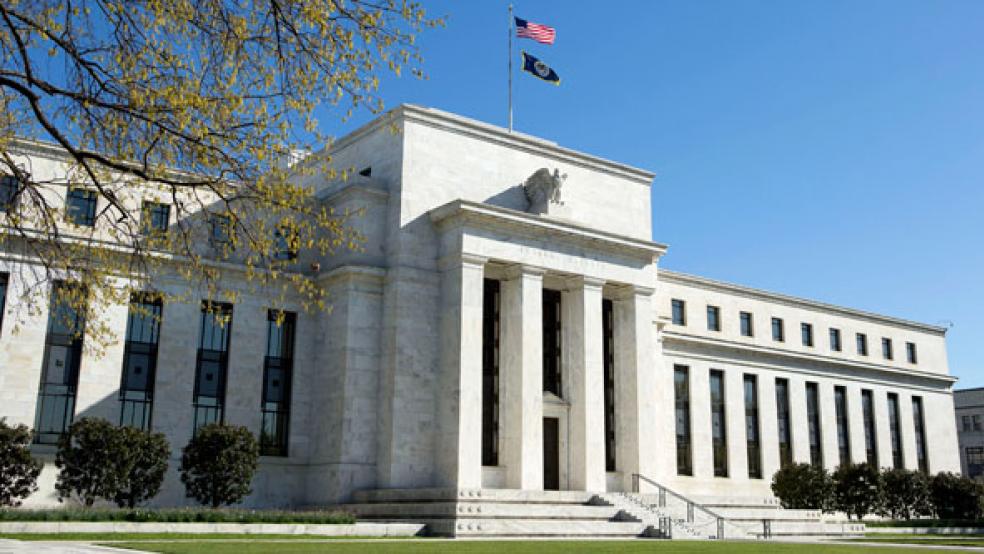Most analysts believe that the Fed will leave interest rates unchanged when it concludes its two-day monetary policy meeting this week. Let’s hope so. Both inflation and inflationary expectations remain below the Fed’s target level of 2 percent, inflationary expectations have been falling, and the most recent employment report points to a slower job market than anticipated.
Even though recent data point to weakness in the economy, some members of the Fed seem anxious to implement the next round of rate increases, perhaps when the Fed meets again in July. This continues a pattern. Time and again the Fed has indicated that a rate increase is coming soon, perhaps at the next meeting, based upon its forecasts of the future strength of the economy. Then it has been forced to delay the increase as new data arrives indicating the economy is not as robust as expected.
Related: Fed Likely to Avoid Rate Hike Before British Vote EU
Will the economy be strong enough to justify a rate increase in July, or will we see the same pattern once again? The day will come when rates need to be increased, but the Fed should wait until there is a great deal of certainty about the strength of the economy before taking this step. There’s a chance that the Fed will raise rates in July, but my guess is that incoming data will not provide the clarity the Fed needs to justify a “data dependent” rate increase.
Another reason to wait for a high degree of certainty before raising rates is the asymmetric costs associated with the two types of mistakes the Fed can make. Due to the lag between the time the Fed’s target interest rate is increased and its impact on the economy, the Fed must base its actions on forecasts of the economy several quarters ahead. Suppose the Fed does not know for sure how strong the economy will be in the future.
If the Fed delays a rate increase and inflation overshoots its 2 percent target due to the economy being stronger than expected, the Fed can quickly raise rates to slow the economy and fix the problem. But if the Fed raises rates and the economy turns out to be weak, employment will be lower than if rates had been left unchanged.
Related: Yellen Faces Fine Balance on Fed Rate Hike After Job Growth Tumbles
Low employment is costlier than overshooting the inflation target, and it is a much harder problem to fix. So if there is a relatively high degree of uncertainty about the economy when the Fed meets in July, as there is likely to be, the Fed should be biased toward leaving rates unchanged.
Finally, one of the indicators the Fed watches closely in determining when to raise its target interest rate is wages. When wages are rising at a rapid pace, the Fed worries about inflation as firms raise prices in an attempt to maintain profit margins. So far, wage pressures have been moderate so this should not be a big concern. But even if wages begin increasing at a more rapid pace, it might not lead to an inflation problem. In recent years the share of income going to profits has increased above the usual historical level and the share going to wages has fallen.
Instead of raising prices as wages increase firms could choose to lower the share of income that is going to profits, especially in cases where higher prices will lower competitiveness in global markets. After decades of rising inequality and stagnant wages workers deserve every chance they can get for their share of national income to increase. Thus, the Fed should wait to until there are clear signs that inflation is a problem before implementing rate hikes that would reduce the increase in wages.
Related: Waning Fed Rate Hike Expectations Push Dollar Index to Five-Week Lows
Former president of the Minneapolis Fed Narayan Kocherlakota recently asked:
“Would [the Fed] have started pulling back on stimulus in May 2013 if its short-term interest-rate target had been at 5 percent instead of near zero, and if it hadn’t been holding trillions of dollars in bonds? I strongly suspect that the Fed would instead have added stimulus by lowering interest rates. If so, then the Fed's current course is driven not by state of the economy, but by a desire to get interest rates and its balance sheet back to what is considered ‘normal.’”
The fastest way to get interest rates back to “normal” is for the economy to begin running on all cylinders as soon as possible. That will take longer if the Fed prematurely slows the economy through rate increases and is then forced to reverse course. Instead of raising rates gradually and then lowering them if the economy is weaker than expected, the best course of action is to leave interest rates unchanged until there are clear signs from both the labor market and inflation that the economy is overheating, and then raise interest rates as fast as needed to bring inflation under control.






